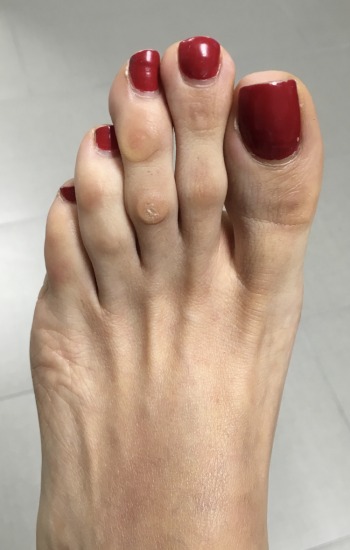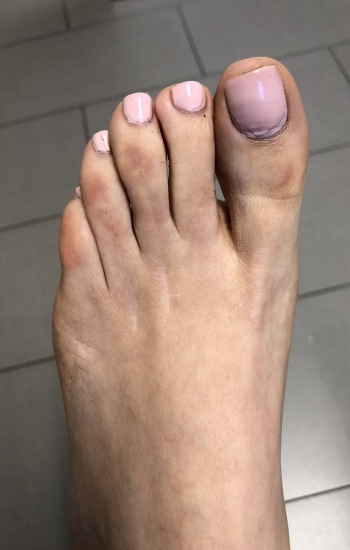Aesthetic Toe Shortening
Excessively long lesser toes are a relatively common deformity and typically pose a cosmetic concern for women more often than men. Commonly referred to as "raptor toe", when the toe hangs off the edge of an open toed shoe, the most prevalent of excessively long toes is the 2nd digit, which is adjacent to the big toe. Normally, the big toe is roughly equal in the length to the 2nd and possibly 3rd, followed by the 4th and 5th to create what is known as the tip-toe parabola. A small percentage of the population suffers from a disruption of this parabola leading to this unsightly condition, as well as shoe fitting problems.
The aesthetic appearance of the toe often leads to its own array of psychological and social issues. Imagine being ridiculed in school as a teen-ager or being embarrassed to wear open toed sandals. Young females typically become very self-conscious about their feet and tend to shy from social activities that would expose them. But far from being simply a cosmetically displeasing deformity, this condition can result in further deformity and deterioration of the toe. Because the longest toe suffers from repetitive microtrauma in closed shoes, the most common result is a hammertoe contracture of the toe and bending of the tip of the toe with most of the weightbearing occurring at the tip rather than the fatty bottom of the toe. As a result, the nail suffers constant damage and often becomes darkened and thickened from fungal infection. The joints on the dorsum (top) of the toe typically rub and become irritated from the top of the shoe, causing unsightly corns, blisters, scarring, pain and occasionally open wounds.
There is no practical or long term method to manage this problem without surgery, especially if shoe fashion is a priority.
Fortunately, all hope is not lost. Dr. Zeetser is at the forefront of innovative and progressive surgical procedures that can effectively correct this condition using state of art digital implants which usually do need to be removed. Generally the procedure is performed at the level of the toe, but occasionally depending on other structural factors, a more extensive procedure may be required. This is evaluated on a case by case basis. With little to no visible scarring and minimal to no pain, the procedure can be done in an outpatient setting and the patient is ambulatory immediately after. Recovery times are much shorter which let you get active and back into shoes faster. In contrast, the older traditional ways of performing the procedure involve the use of a metal wire protruding from the tip of toe for at least 4 weeks. Not only does this prevent the patient from being able to properly bathe for a prolonged period of time, but there are issues associated with the wires including increased risk of infection, damage to the externally protruding wires by accident and the need to later remove the wires.
Aesthetic Toe Shortening

Female A Before Surgery

Female A After Surgery

Female B Before Surgery

Female B 2 Months After



